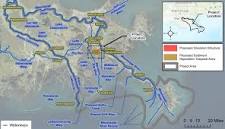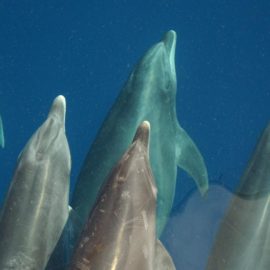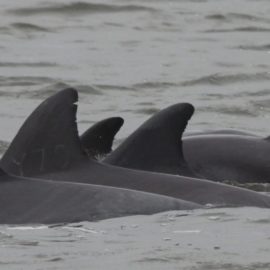
The first step is done on the construction as the state bought the land.
The state has paid $36 million to Tallgrass, an energy infrastructure company, for the rights to purchase about 500 acres of land in Plaquemines Parish that includes the site of the proposed Mid-Barataria Sediment Diversion. Tallgrass, a company that last year cancelled plans to build a $2 billion, 20-million-barrel crude oil export terminal on the property on the west bank of the Mississippi River just north of Myrtle Grove and the Ironton community, announced Wednesday that it had informed the Plaquemines Port Harbor and Terminal District that it was cancelling its lease of the property and assigning its purchase rights to the state’s Coastal Protection and Restoration Authority. Under the terms of the agreement, the port would have 30 days to match the state’s offer to Tallgrass if it wanted to do something different with the land, a Tallgrass spokesperson said. The land sale will be finalized five days after the port’s decision. Port district executive director Charles Tillotson said the district is recognizing the Tallgrass subsidiary’s option to terminate the lease and find a buyer for the land. “The buyer is CPRA (Coastal Protection and Restoration Authority) for a purchase amount of $36M,” he said.
nola.com
This purchase avoids the state using Eminent Domain.
The agreement would allow the state to avoid using eminent domain to acquire land for the $2.5 billion, 2-mile-long diversion, which is expected to begin construction in March. “Our state is in a battle against time and the elements to shore up our coastlines before it’s too late,” said Gov. John Bel Edwards in a news release issued by Tallgrass. “By prioritizing the people of southeast Louisiana and advancing our hurricane preparedness, this agreement highlights the importance my administration has placed on attracting companies to Louisiana who prioritize Louisianans.” The agreement with the state also calls for the authority to spend $3 million on “community resiliency” projects in Ironton and adjacent communities, which were severely damaged by Hurricane Ida in 2021. State officials said that money was already set aside for the community from federal offshore oil money coming to the state under the Gulf of Mexico Energy Security Act, and is not tied to the $360 million in mitigation funds expected to be spent as part of the diversion construction project.
Tallgrass will also do community work.
Tallgrass will use $3 million of the money it receives from the state to “advance social and economic development initiatives” in the area, including contributions to help rebuild the St. Paul Missionary Baptist Church and assist with other recovery efforts in Ironton. Tallgrass had already established a 50-acre, permanent buffer-zone adjacent to Ironton, which will remain in place, to assure protection of the Saint Rosalie Plantation Cemetery. “For so many years, this community has been neglected. I appreciate Tallgrass’s willingness to contribute wherever needed and their decision to remain a part of our community. I look forward to our discussions about preserving the Saint Rosalie Plantation Cemetery as well as ensuring the health and well-being of Ironton,” said Rev. Dr. Haywood Johnson Jr., pastor of Saint Paul Missionary Baptist Church, in the Tallgrass news release. CPRA and Tallgrass will create a new Ironton & Southeast Louisiana Committee, which, among other things, will develop a strategic plan to preserve and memorialize the plantation cemetery. It will include representatives of Ironton, CPRA, Tallgrass, and representatives appointed by the president of Plaquemines Parish.
Tallgrass has made other donations to the area.
Tallgrass donated $30.5 million to the Plaquemines port district in 2018 as part of a cooperative endeavor agreement. The port used the money to buy the 500-acre property and entered into a long-term lease with Tallgrass’s Plaquemines Liquids Terminal for development of the land. Tallgrass spent about $5.5 million since then in its efforts to develop the land, and after a reappraisal of the site following conversations with Ironton and other community residents, and the discovery of the Saint Rosalie Plantation cemetery and other cultural artifacts, withdrew its applications for the terminal. As a result, the firm will have a net loss on its investment, despite the state payment, said Steven Davidson, Tallgrass vice president for public affairs, in an interview. Under the agreement with the state, the company might still use part of the land sandwiched between the former site of the Phillips 66 Alliance refinery and the diversion as the site of future “renewable and clean energy developments,” if the coastal authority finds they will be consistent with the diversion’s operations, other restoration and flood protection objectives, the Ironton strategic plan and the state’s coastal master plan. Tallgrass has invested in similar low- and no-carbon projects elsewhere, but has not notified the state of any future project for the property.
Tallgrass is trying to be a good neighbor and they will use this in the future for their needs.



